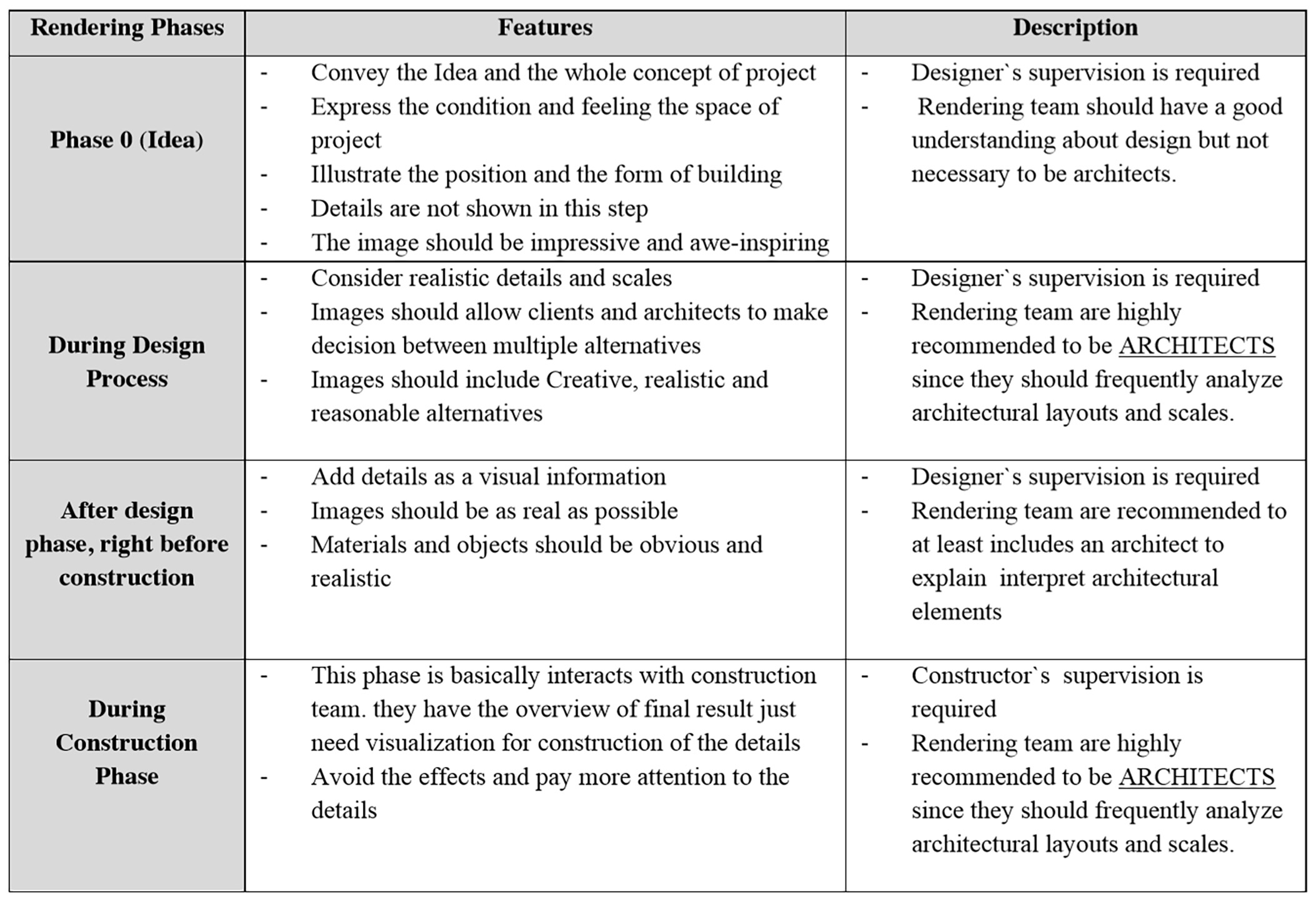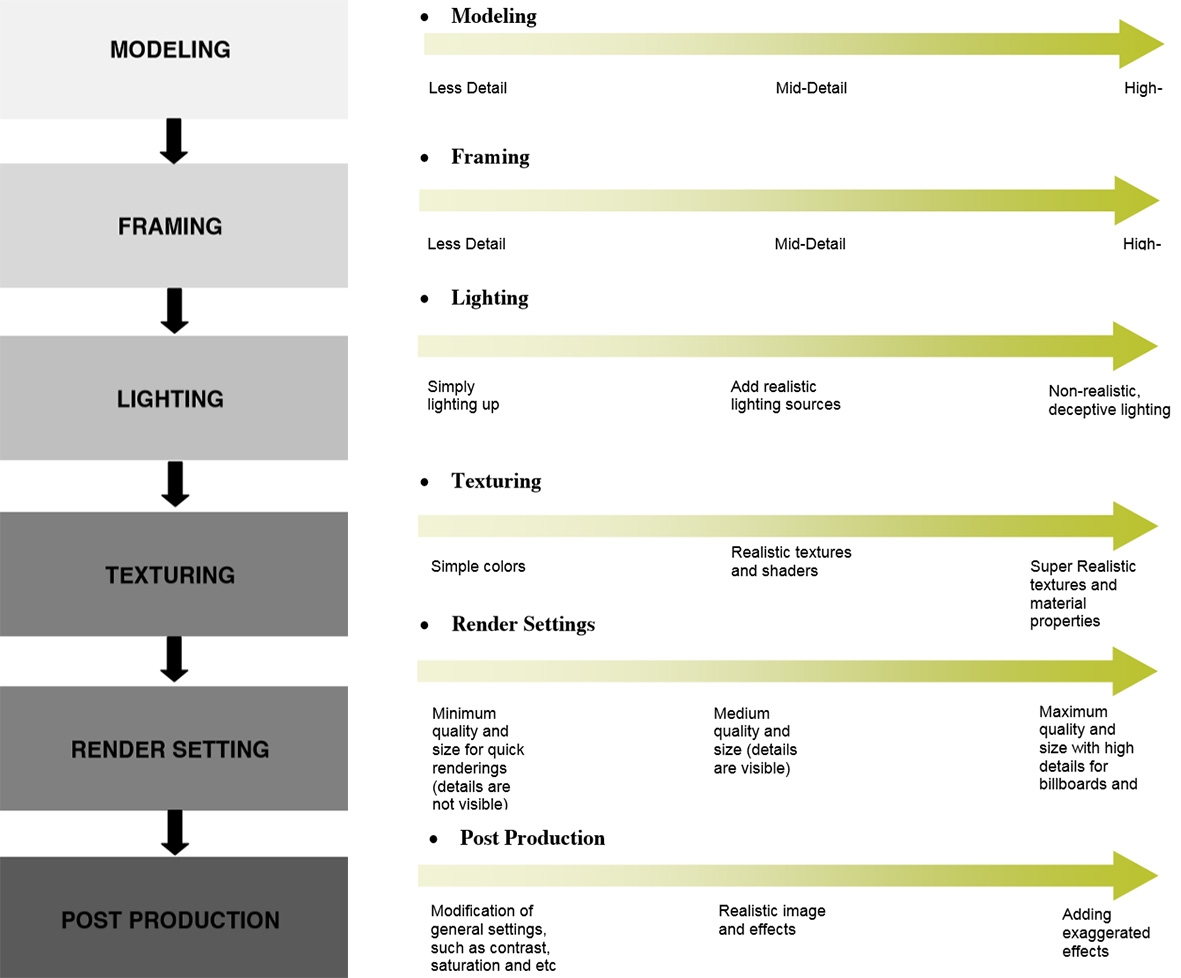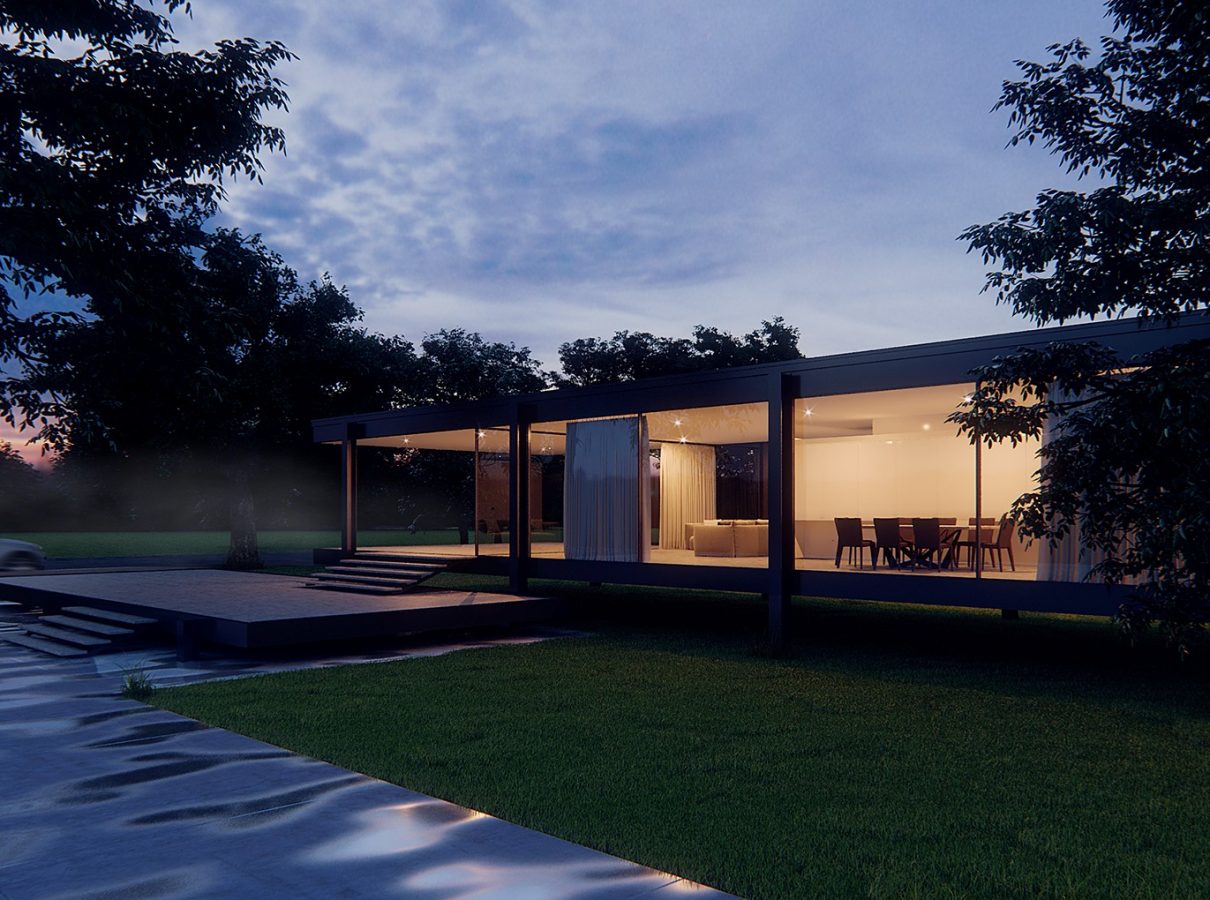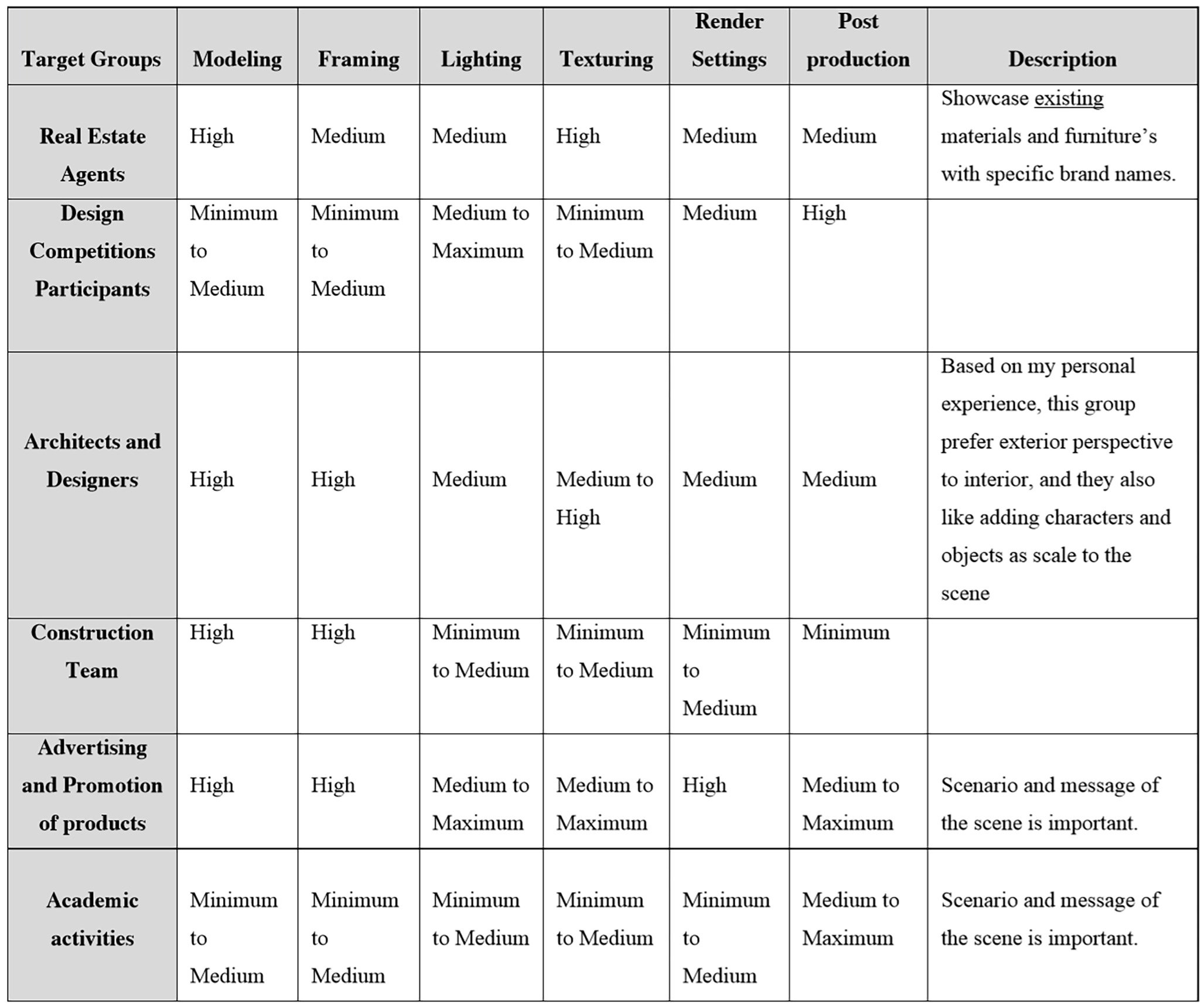Architectural visualization is a method to connect architects, clients and builders together and ease the communication between them. Using the architectural visualization helps all parties to avoid any misinterpretations or misunderstandings during the project implementation. This gives all parties the feeling and image how the building looks like even though you have never been there.
In this article we discuss and classify different phases, purpose and target groups of architectural visualization(ArchViz).
Evaluation of criteria in digital architectural visualization is a crucial aspect of the design process, as it helps to ensure that the final product meets the needs and expectations of all stakeholders. The process involves assessing the visual representation of a building or structure against a set of established criteria, including functionality, aesthetic appeal, and technical accuracy.
Functionality is a key criterion in digital architectural visualization, as it ensures that the building is functional and meets the needs of its intended users. This includes assessing the layout and flow of the space, as well as the functionality of individual rooms and areas.
Aesthetic appeal is also an important criterion, as the visual representation of the building should be visually pleasing and harmonious. This includes evaluating the use of color, texture, and form, as well as the overall composition of the image.
Technical accuracy is another crucial criterion, as the digital representation should be an accurate representation of the building as it will be constructed. This includes assessing the dimensions and proportions of the building, as well as the materials and construction techniques that will be used.
Overall, the evaluation of criteria in digital architectural visualization is an ongoing process that helps to ensure that the final product is functional, aesthetically pleasing, and technically accurate. It is important to involve all stakeholders in this process, including architects, engineers, and project managers to ensure that everyone’s needs are met.
ArchViz Phases

- Cycle for rendering can start again in a case of renovation and maintenance.
Creating realistic and non-realistic renderings requires planning, attention to details and following the proven procedures. Most of newcomers in the field of architectural visualization do not know where to start and what path to follow in order to arrive at the final outcome.
Although there are various kinds of render engine tools which contain dozens of features, knowing that the logic of all these tools follows the similar structure, we sorted all aspects, parameters and problems into a framework that makes it easier for different types of users to reach their desirable result.
Process flow and Purpose of ArchViz



